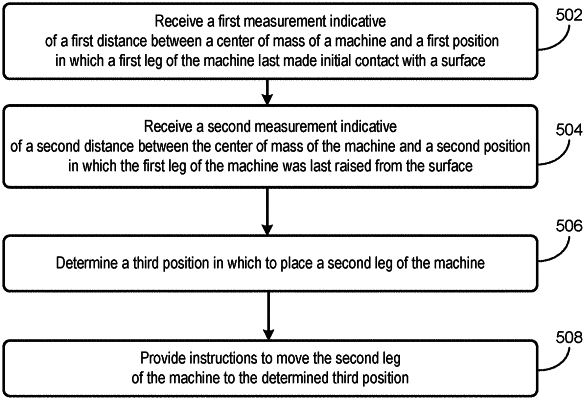| CPC B25J 9/1682 (2013.01) [B25J 5/00 (2013.01); B25J 9/1666 (2013.01); B25J 13/089 (2013.01); B25J 19/02 (2013.01); B62D 57/032 (2013.01); Y10S 901/01 (2013.01)] | 20 Claims |

|
1. A computer-implemented method when executed on data processing hardware causes the data processing hardware to perform operations, the operations comprising:
executing a gait for a robot, the robot having a center of mass and comprising a first leg and a second leg, each leg disposed at a respective position offset laterally and longitudinally from the center of mass of the robot, wherein the gait cycles the first leg through a first stance period and the second leg through a second stance period after the first stance period, each stance period initiated when a respective leg touches down on a support surface and terminates when the respective leg lifts off of the support surface;
when the first stance period terminates while executing the gait, generating an upcoming touchdown location on the support surface for the second leg to initiate the second stance period based on:
a first measurement of a first distance between the center of mass of the robot and the first leg at a time when the first leg initially touched down on the support surface; and
a second measurement of a second distance between the center of mass of the and the first leg when the first stance period terminates; and
instructing the robot to move the second leg to the upcoming touchdown location on the support surface.
|